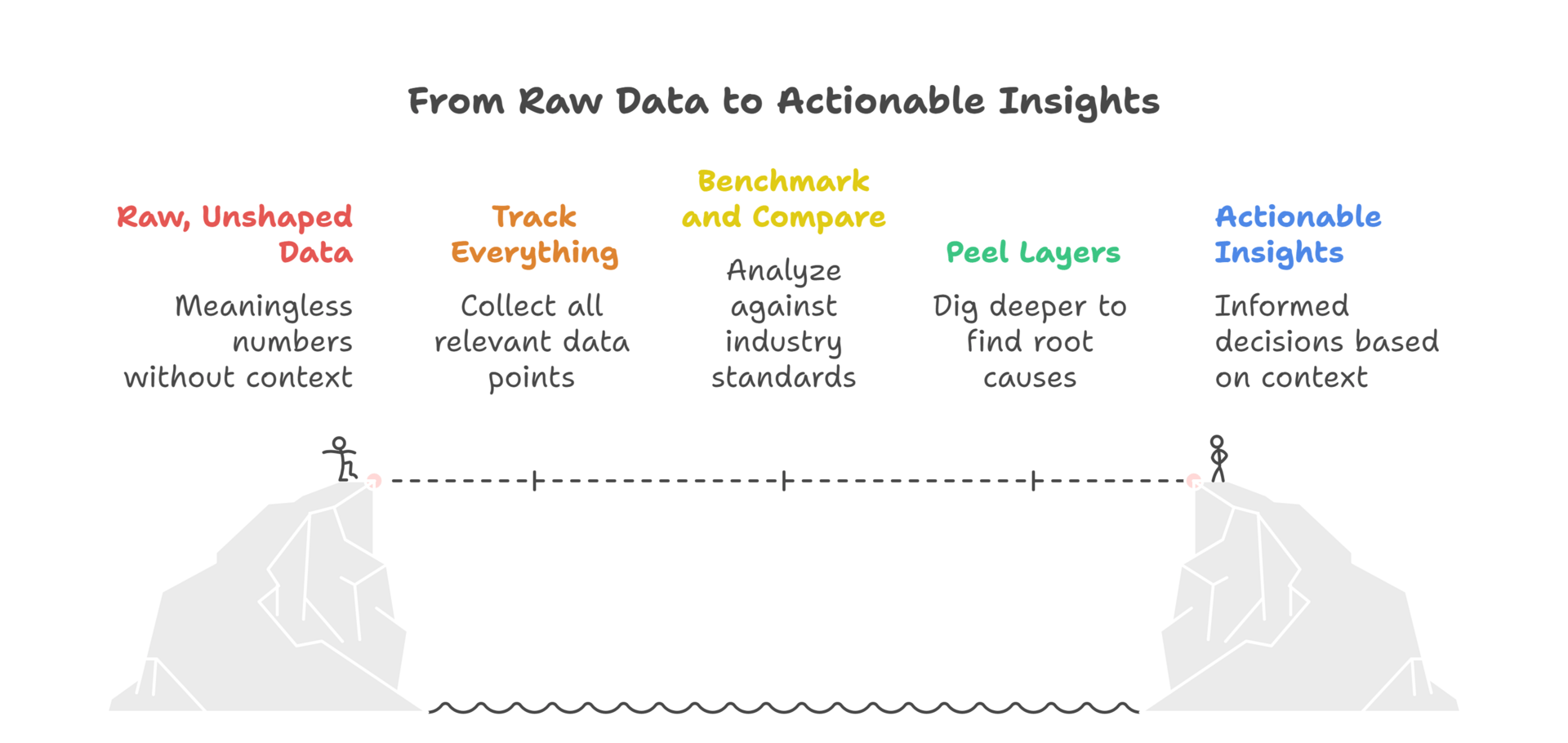Numbers don’t tell stories. Leaders do, by asking the right questions.
Data Is Clay
Data is clay. By itself, it has no shape, no meaning.
What you mould out of it decides whether it becomes a pot that holds water, or just a lump of mud.
In business, it’s the same. Numbers by themselves rarely tell the full truth.
The trap of surface numbers
At GUVI, we once had a month where revenue looked flat.
The sales team came back saying: “No progress. Marketing leads are weak. Here’s the data.”
On the surface, the numbers agreed. Leads were up, but conversions looked stuck.
But when we did a CBCID-style deep dive, the real picture came out.
The leads were right. The slip happened in the funnel - prospects were being routed to the wrong landing page.
Once we fixed it, conversions bounced back.
The same data that looked like “marketing failed” was actually a system glitch hiding in plain sight.
That’s the danger of looking at the surface level instead of diving deep.
The bigger danger
Sometimes data even tricks you into celebrating.
Say your conversion rate goes from 1.5% to 2.5%. The team feels like they’ve won.
But put it against the industry’s 6%, and you realise you’re still crawling.
That’s why context is everything. Without it, you either clap for fake wins or chase the wrong problems.
What this taught me
At GUVI, we stopped treating numbers as “answers” and started treating them as “clues.”
Track everything, but don’t take the first reading at face value.
Benchmarks and comparisons matter - they tell you if you’re ahead or just less behind.
Always peel one more layer: the root cause is usually sitting two clicks deeper than the dashboard.
Data itself is not the truth. Interpretation is.

Takeaway
Dashboards are not verdicts; they are starting points.
Numbers without context mislead. Use numbers with a digging guide.
Treat data like clay - mould it, test it, and only then build on it
Stay tuned for the next edition, where I’ll share why every scalable system starts with measurable actions
